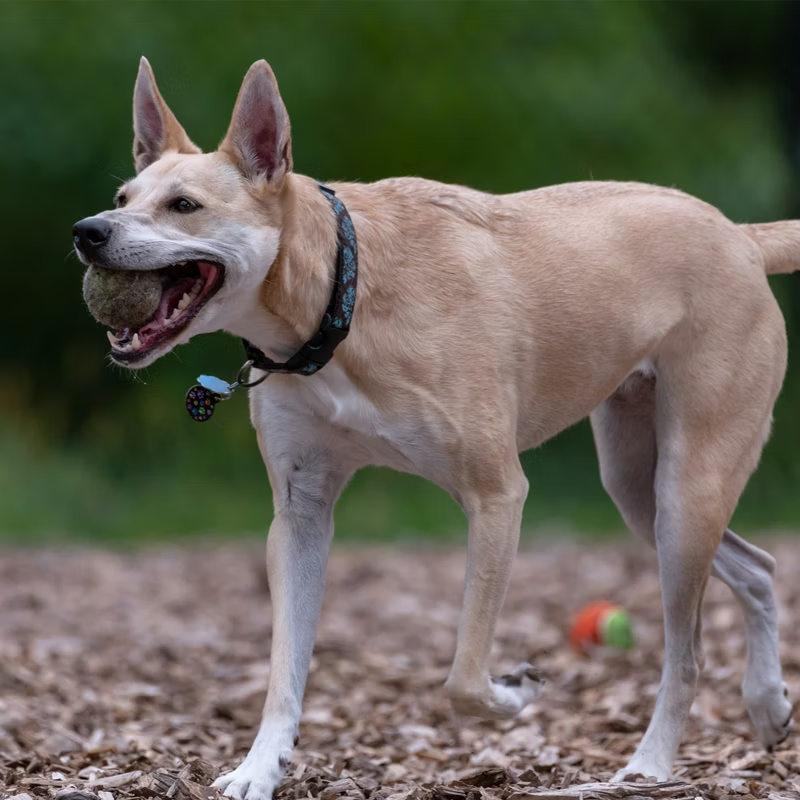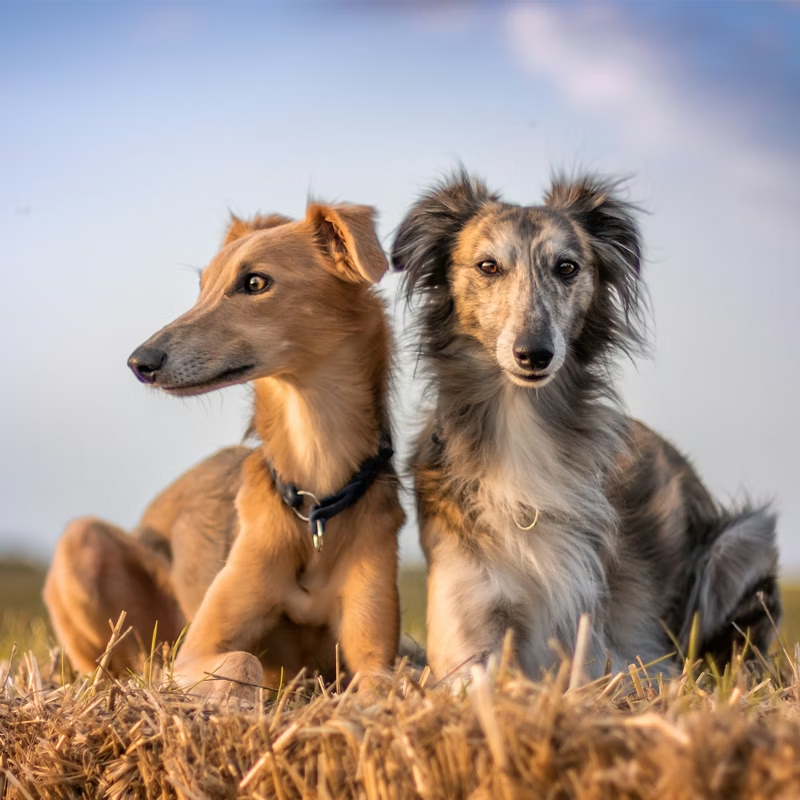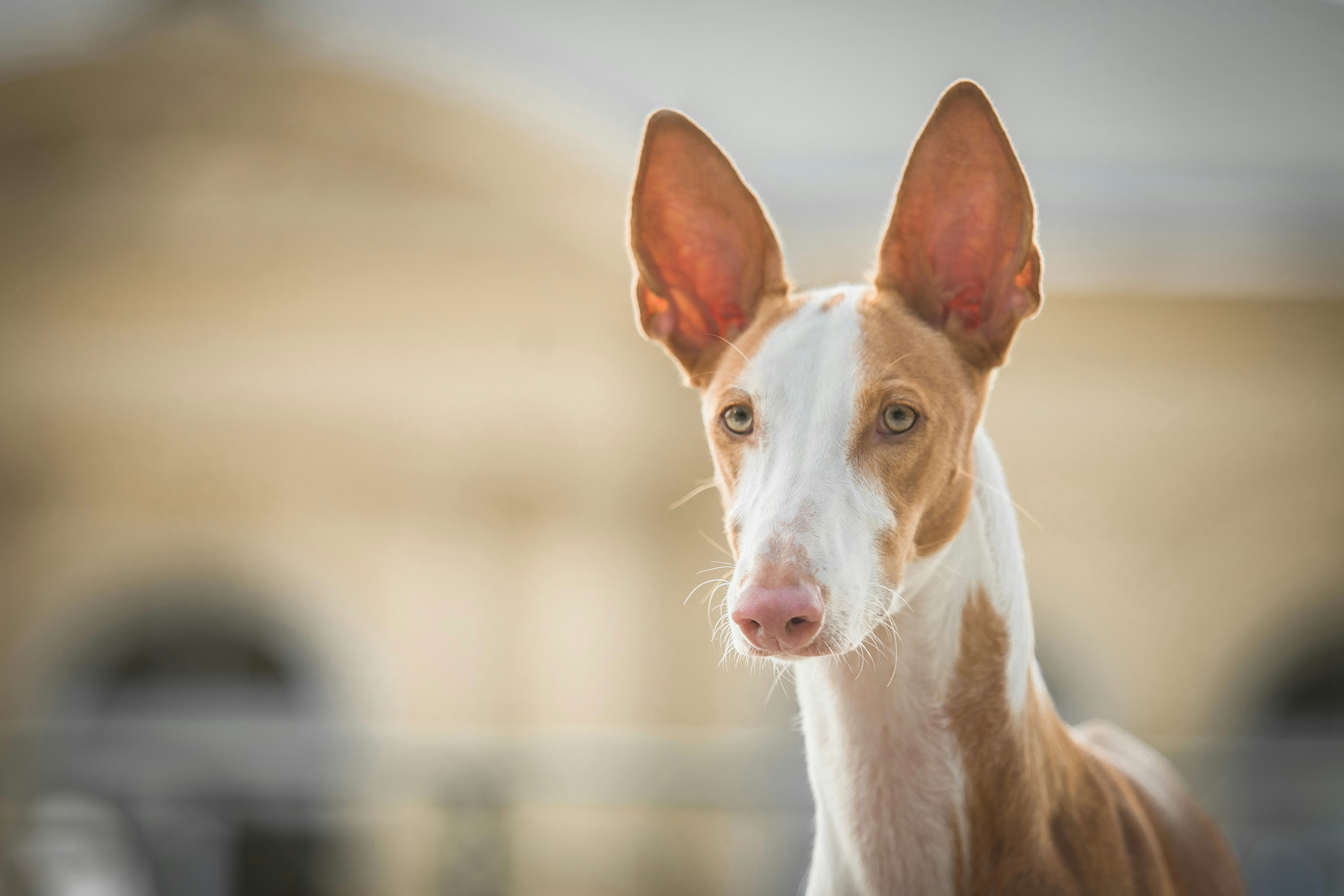You’d be hard-pressed to find a dog lover who wouldn’t recognize a Dachshund or a French Bulldog. But the most well-known breeds only represent a portion of today’s purebred dog population. So we thought we’d give a little love to a few of the dog breeds that might not be household names but, in many cases, would make fantastic household additions.
What makes a dog breed rare?
The short answer? Population size. While there is no set criteria for what makes a dog breed rare, breeds that are uncommon and difficult to obtain due to extremely limited breeding programs are considered rare. Some rare dog breeds have long histories and enjoyed periods of immense popularity only to see their numbers shrink over time. Other breeds are newly developed and haven’t had time to build up a true following. But whatever the reason, there is plenty to love about many lesser known breeds. So let’s take a moment to introduce you to a few of our favorites.
Get to know these uncommon dog breeds
Rare dog breeds come in all shapes and sizes, from small rare breeds to medium and large rare breeds. And their personalities and temperaments vary just as much as their physical appearance.
Ibizan Hounds
To learn about the early days of the Ibizan Hound, you need to go back a few years. Although ancient Egyptian tombs from 3100 B.C. included the remains of dogs that likely resembled Ibizan hounds,evidence suggests they are a more recently developed (but still old) breed closely related to the Podenco Canario, Pharaoh Hound, and Cirneco dell’Etna. The breed is native to the islands of Mallorca, Ibiza, Menorca and Formentera, where it is known as the Podenco Ibicenco, and experts believe they may have been brought there by the Phoenicians, Carthaginians, and possibly Romans.
Ibizans are members of the sighthound group, and while they have the characteristic speed and sleek build of other sighthounds, they are perhaps best known for their high-jumping abilities. How high? Try 5-6 feet straight up from a standstill. So if you have an Ibizan, it’s recommended that you also have an extra tall fence. These pups earned their keep as expert rabbit hunters, and their prey drive remains strong to this day. In other words, a home with small pets may not be the best fit for this breed.
Ibizan Hounds come in shorthaired and wirehaired varieties and are adorable nose to tail, but stand-out features include their giant, pointy ears, amber eyes and circular tail.
Alaskan Klee Kai
If you’re drawn to sled dogs but looking for a pup that comes in a smaller package, the Alaskan Klee Kai may be for you. Alaskan Huskies and Siberian Huskies were likely bred with American Eskimo Dogs and Schipperkes to reduce their size and create the Klee Kai breed standard. These adorable pups come in toy, miniature, and standard sizes, though all versions are under 17 inches tall. However, their bodies are the only small thing about them. Klee Kai have big personalities, big hearts, and big energy. Far from couch potatoes, this breed likes to stay busy by guarding the property, chasing small critters, or being part of family activities.
Jagdterrier
In German, "Jagdterrier" translates to "hunt terrier," which tells you a lot about this special breed. Bred to be a versatile hunter, Jagterriers are courageous, steady-natured, and hardworking. Their coats come in rough and smooth varieties and they are typically black with tan markings, though some dogs can be gray-black or dark brown.
Though well-known in their native Germany, the Jagterrier is largely unfamiliar to the rest of the world.

Carolina Dog
Historically, the best place to find a Carolina Dog was tucked away in a remote corner of South Carolina or Georgia. However, the American Kennel Club now recognizes the breed in its Foundation Stock Service, and a national breed club has formed, so the Carolina Dog may be a breed on the rise.
Also known as "swamp dogs," these pups are often found living a semi-wild life in isolated swamps and forests. Because they’ve spent so much time on their own, they’ve evolved naturally and share many characteristics and behaviors with wild dogs. They are notable for their pump handle or fishhook-shaped tails and known for their love of climbing and digging. But just because they have wild roots doesn’t mean they aren’t well-suited for family life. Carolina Dogs can be affectionate, loyal, gentle pets that enjoy being added to a human pack.
Lacy Dog
When the Lacy brothers’ covered wagons rolled into Texas in the 1850s, they realized they needed an all-around homestead dog for herding, hunting, tracking, and guarding livestock. So they got to work developing what would become known as the Lacy Dog. You may also know them as the Blue Lacy, though that name doesn’t give nod to the breed’s other coat colors: red and tri-colored. Like the Weimaraner, the Lacy’s color is always dilute, a recessive genetic trait, called “blue” in black dogs owing to the bluish-grey tint it gives their coat.
This high-energy breed is a working dog through and through. Like other members of the herding group, if they aren’t given a job to do, they’ll find a way to keep themselves busy. As small ranches have given way to larger farms and high-tech equipment, the Lacy’s numbers have dwindled. But Texas’ respect for them has not. These pups are the state dog of Texas and will always be known as the first breed to originate in the Lone Star state.
Dutch Smoushond
The Dutch Smoushond is a small rare dog breed from the Netherlands. These shaggy-furred pups were tasked with keeping rats and mice at bay in stables in 19th century Netherlands. With decreased use of horses and the rise in popularity of foreign breeds, the Smous went extinct just prior to World War II. Luckily, a group of dedicated breeders worked to reconstruct the breed starting in 1973, using Dutch Smous-like mixes and Border Terriers, until official recognition was gained in 1985. It still remains a rare breed today, but those who are lucky enough to have a Dutch Smoushond as part of their family enjoy their affectionate, friendly nature.
Danish-Swedish Farmdog
As their name implies, Danish-Swedish Farmdogs got their start on small family farms in Denmark and Sweden, working as ratters, livestock herders, and watchdogs. But in addition to their versatile farm skills, Danish-Swedish Farmdogs are also known as playful, family-friendly companions. That’s good news for these little pups, because as family-run farms gave way to larger enterprises, the need for their services diminished. Today, their natural abilities are often showcased in dog sports including agility, flyball, K9 nose work, and tracking.

Silken Windhound
Ever wonder how a Whippet would look with long, wavy hair? One glance at a Silken Windhound will give you a pretty good idea. This relatively new breed was developed by crossing Borzois, known for their luxurious long coats, with Whippets and Windsprites. Whereas Windsprites (formerly known as longhaired Whippets) are more common in Europe, Silken Windhounds are an American breed. These mid-sized sighthounds are easy to train, friendly pups that get along well with kids and love to be part of the family. And their natural speed and athletic abilities make them champs at dog sports such as agility, lure coursing, and competitive obedience. Game on.
Bedlington Terrier
At first glance, you may confuse the Bedlington Terrier for a lamb. But don’t let their trademark haircut fool you. This very old breed was bred to hunt multiple types of prey, including rabbits, foxes, and even otters thanks to their impressive swimming skills. Though they have the oldest unbroken terrier pedigree (dating back to 1782), their population numbers have dwindled over the last several decades and today they are a relatively rare breed.
True to their terrier nature, Bedlingtons can be stubborn and independent, but these energetic pups love their people and can make a great addition to active families.
Biewer Terrier
The Biewer Terrier (pronounced “beaver”) is a relatively new kid on the block. These small, long-haired (and very adorable) pups first came onto the scene in 1984, when a family of Yorkshire Terrier breeders in Germany discovered puppies possessing the piebald gene born into their litters—and a new breed was formed.
These little pups are generally easy-going (by terrier standards) and make fun-loving companions. They get along well with other animals, are easy to train, and make fantastic cuddle buddies.
How to find out a dog’s breed
It’s very tricky to determine a dog’s breed based on visual cues alone. In fact, more times than not, visual identification by itself is a highly inaccurate method of breed identification. A Wisdom Panel DNA test, on the other hand, offers the most accurate breed detection and breed reporting down to 1%. That’s why more than 4 million pet parents have trusted Wisdom Panel to test their pups. If you want to join the pack and uncover breed, health, and trait information about your dog, explore our family of dog DNA tests.
Looking for more dog breed info?
If you’re doing research before bringing home your new best friend, check out the following resources
Wisdom Panel™ screens for 350+ breeds
Powered by the world’s largest breed database, test now and understand your dog’s genetic makeup to allow you to customize care.
Shop DNA kits


